#charles antoine coypel
Explore tagged Tumblr posts
Text

The Fury of Achilles by Charles-Antoine Coypel
#achilles#art#the iliad#charles antoine coypel#trojan war#troy#mythological#mythology#greek mythology#history#europe#european#fury#wrath#anger#gods#ancient world#homer#antiquity#ancient greek#ancient greece#myrmidon#myrmidons#greek#greece#thessalian#thessaly#ancient thessaly#mediterranean
365 notes
·
View notes
Text

Portrait Of Francois De Jullienne Standing Beside His Wife
Artist: Charles-Antoine Coypel (French, 1694–1752)
Title: François de Jullienne (1722–1754) and Marie Elisabeth de Jullienne (Marie Elisabeth de Séré de Rieux, 1724–1795)
Date: 1743
Medium: Pastel, black chalk, watercolor, and traces of black chalk underdrawing on four joined sheets of handmade blue laid paper, mounted on canvas and adhered to a keyed stretcher
Collection: Metropolitan Museum of Art, New York City, NY, United States
Description
This double portrait is among the most technically brilliant by Coypel, who was a member of the French Royal Academy and official painter to King Louis XV. He used dazzling and unerring control of a variety of media (primarily pastel, but also chalk and watercolor) to capture the wide range of textures, including lace and velvet. The sitters are traditionally identified as Marie Elisabeth de Séré de Rieux and her husband François de Jullienne, son of a wealthy textile merchant, collector, and patron of Antoine Watteau. The direct gaze of the sitters, related to Coypel’s interest in the theater, is a conceit he used regularly.
#portrait#double portrait#couple#pastel#watercolor#men#woman#french artist#european art#european culture#charles antoine coypel#three quarter length#sitting#embroidery#costume#jewelry#ruffles#wig#flowers#chair#indoors
7 notes
·
View notes
Photo

Portrait of Philippe Coypel and His Wife, Charles-Antoine Coypel, 1742
#portrait of philippe coypel and his wife#Charles-antoine coypel#Charles antoine coypel#coypel#1742#1740s#1700s#18th century#portrait#painting#art#rococo
100 notes
·
View notes
Text
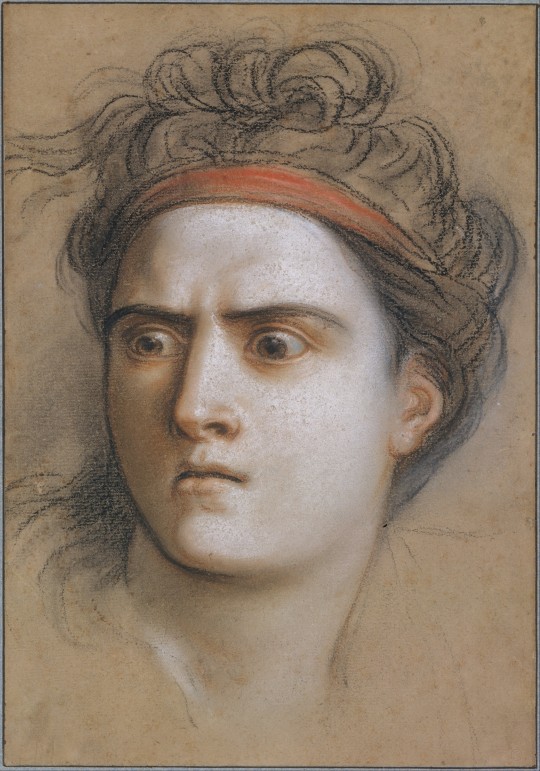
Medea, Charles-Antoine Coypel, ca. 1715
#art#art history#Charles-Antoine Coypel#classical mythology#Greek mythology#Medea#imaginary portrait#drawing#pastel#Rococo#French art#18th century art#Metropolitan Museum of Art
670 notes
·
View notes
Text

Fury of Achilles
by Charles-Antoine Copel
...and in a flash Poseidon and Athena went to him and stood beside him, assuming the forms of men. Taking his hand in their hands, they assured him with their words; and Poseidon who shakes the earth was first of them to speak: “Son of Peleus, do not shrink back, nor be alarmed; such allies are we two gods who stand by you with Zeus approving, I and Pallas Athena. Since you are not destined to be killed by a river, he will soon give way—you yourself will see this. But we have close advice for you, if you will heed it; do not rest your hands from war that levels all alike, until you have penned within Ilion’s famed walls the Trojan men, those who should escape you. And after you have stripped the life from Hector, return to your ships; we grant you to win glory.”
The Iliad, Book 21, Lines 284-297
Hermitage
#Charles-Antoine Coypel#Achilles#The Iliad#Athena#poseidon#Scamander#Hephaestus#Simoeis#Homer#Greek Mythology#tagamemnon#fine art
55 notes
·
View notes
Text

Fury of Achilles
Charles-Antoine Coypel
14 notes
·
View notes
Text

Folly Embellishing Old Age With the Adornments of Youth, oil on canvas by Charles-Antoine Coypel, c. 1743.
7 notes
·
View notes
Photo
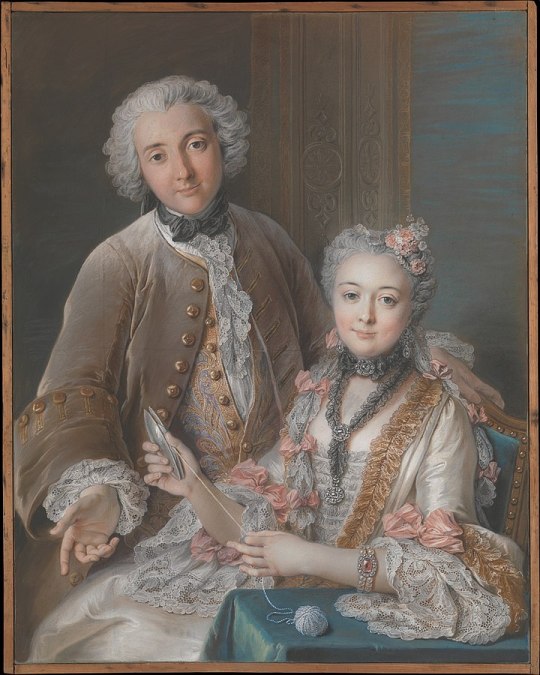
Charles-Antoine Coypel, Double Portrait Presumed to Represent François de Jullienne (1722–1754) and His Wife (Marie Élisabeth de Séré de Rieux, 1724–1795), 1743, pastel, black chalk, watercolor, and traces of black chalk underdrawing on four joined sheets of handmade blue laid paper, mounted on canvas and adhered to a keyed stretcher, 100 x 80 cm, Metropolitan Museum of Art, New York
Source: Wikimedia Commons
#art#drawing#pastel#pastel drawing#charles-antoine coypel#portrait#double portrait#18th century#1740s#18th century art#18th century drawing#18th century portrait#18th century fashion#historical fashion#rococo#rococo fashion#rococo art#rococo drawing#french rococo#rococo portrait#couple
34 notes
·
View notes
Text

Charles-Antoine Coypel, The Fortune Teller, date unknown. Oil on canvas
17 notes
·
View notes
Text
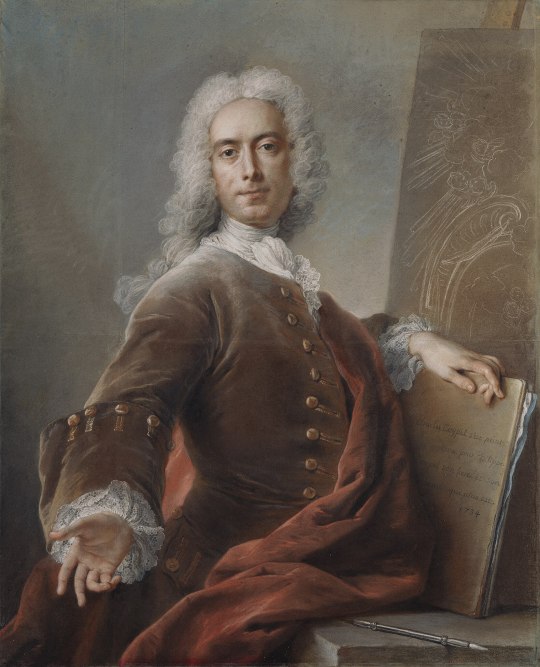
Charles-Antoine Coypel - Self-Portrait
4 notes
·
View notes
Text
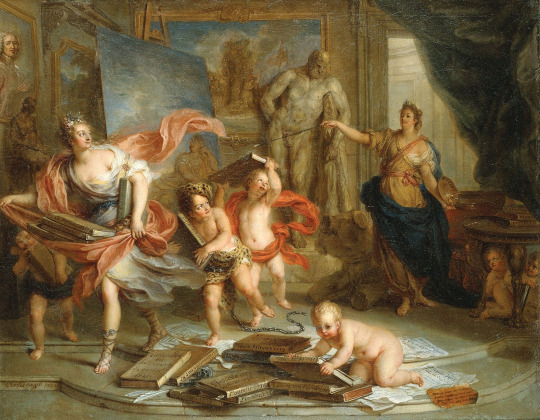
Ejecting Thalia by Charles-Antoine Coypel
#charles antoine coypel#art#thalia#mythological#mythology#greek mythology#goddess#muse#muses#europe#european#history#antiquity#paintings#arts#books#sculptures#portrait#hercules#farnese#belvedere#torso#spirits
27 notes
·
View notes
Text



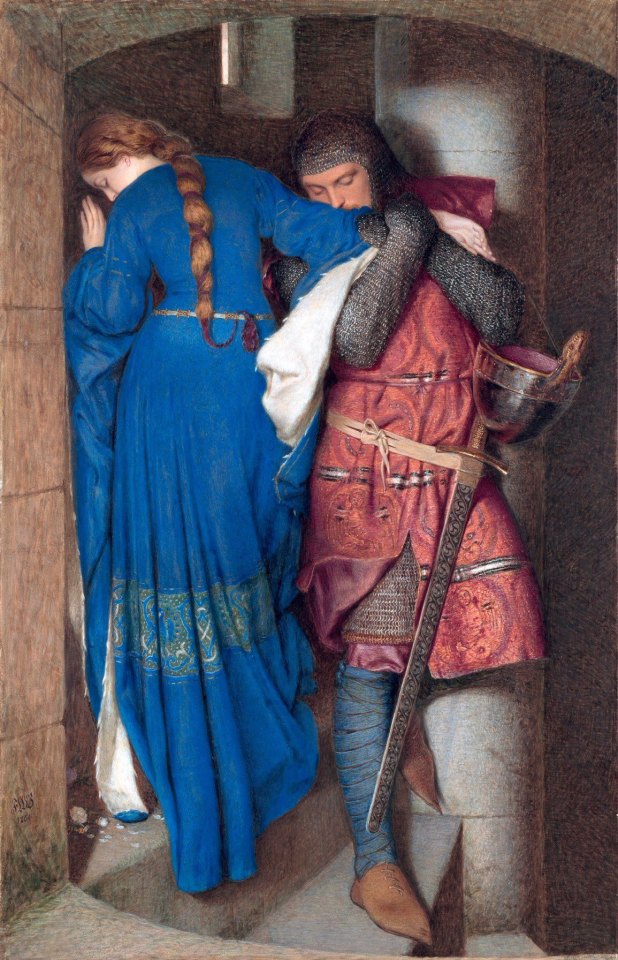

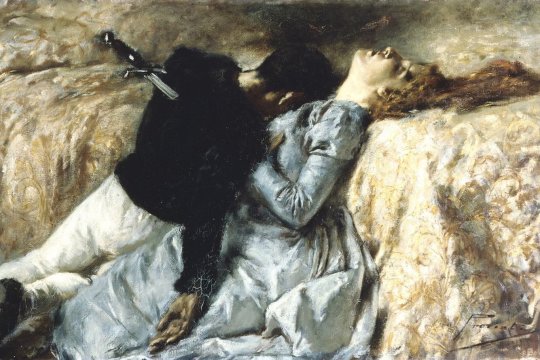

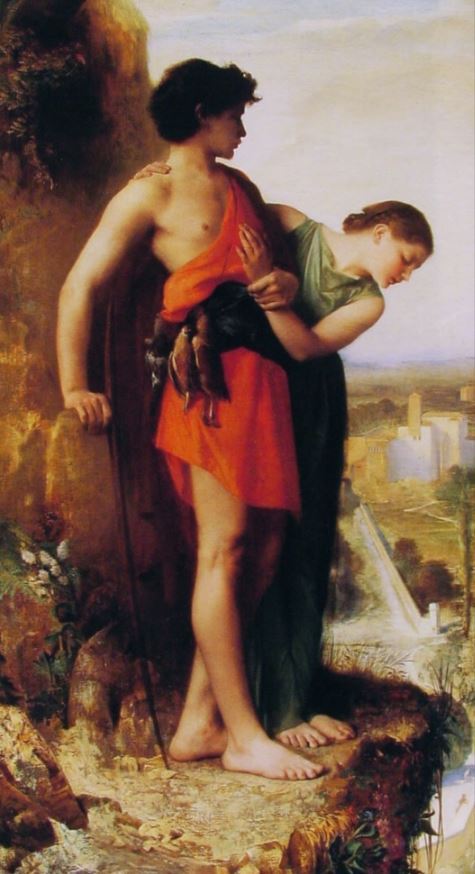

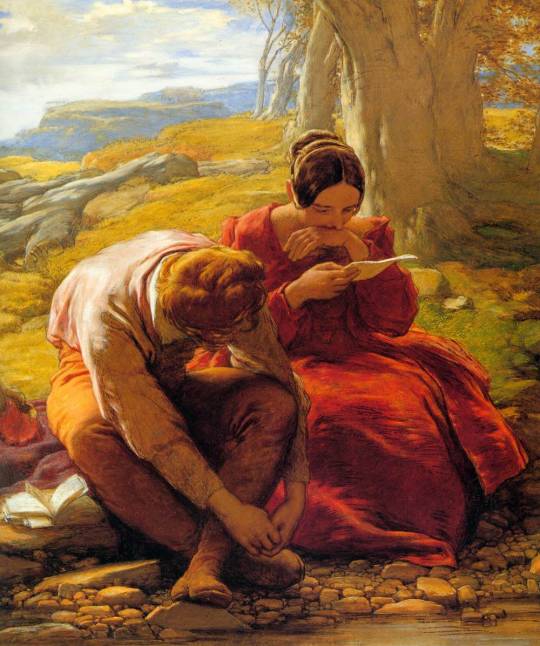


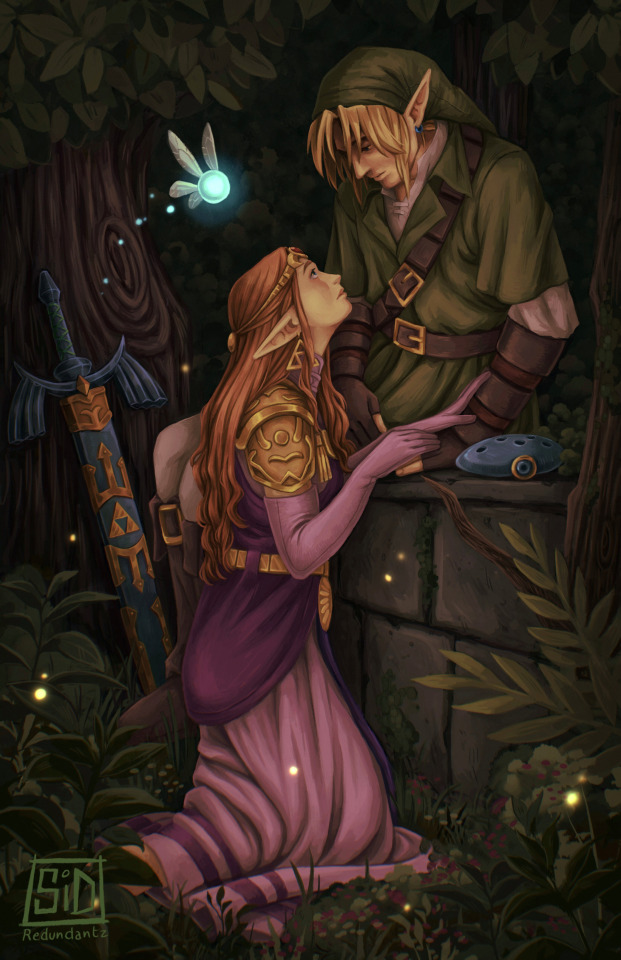

Zelda x Classic Paintings
Frederic Leighton - The Reconciliation of the Montagues and the Capulets over the Dead Bodies of Romeo and Juliet (1855)
Frederic William Burton - Hellelil and Hildebrand, the Meeting on the Turret Stairs (1864)
Gaetano Previati - Paolo e Francesca (1887)
Emile Levy - Le Vertige, Idylle (1867)
William Mulready - The Sonnet - (1839)
Charles-Antoine Coypel - Young Girl Holding a Mask (1745)
Lamia - JW Waterhouse (1916)
#zelda#zelink#legend of zelda#link#totk#botw#tears of the kingdom#ocarina of time#breath of the wild#skyward sword#my art#redundantz art#long post
6K notes
·
View notes
Text
Positive Depictions of Zeus
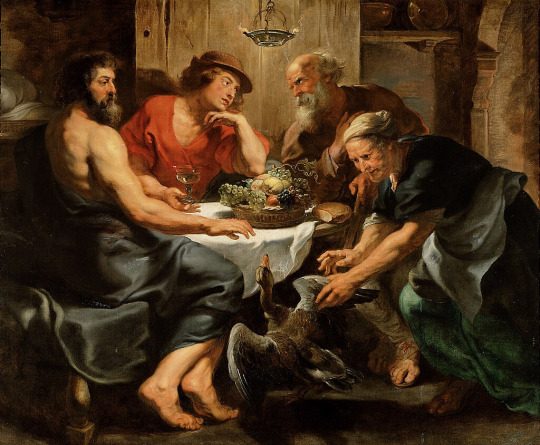
Peter Paul Ruben, "Jupiter and Mercury at Philemon and Baucis" (1632)

Titles & Epithets of Zeus
As a Fair and Merciful God
Μειλιχιος [Milichius]: Gracious, Merciful
Ευηνεμος [Evenemus]: Of Fair Winds
As a Bringer of Abundance and Prosperity
Επιδωτης [Epidotes]: Giver of Good
Πλουσιος [Plusius]: Of Wealth
Απημιος [Apemius]: Averter of Ills
As a Leader, Chief, and King
Βασιλευς [Basileus]: King, Chief, Ruler
Ὑπατος [Hypatus]: Supreme, Most High
Monarch of the Sky (by Homer and Virgil)*
Sire of Gods and Men (by Homer and Virgil)*
ἀρχὸς ἁπάντων [Archus Apantôn]: Commander of All Things*
As a Protector of People, Cities, and Homes
Κτησιος [Ctesius]: Of the House, Property
Λαοιτης [Laoites]: Of (all) the People
Φυξιος [Phyxius]: Of Refuge / Puts to Flight
Ξενιος [Xenius]: Of Strangers, Hospitality
ἀγοραῖος [Agoraios]: Protector of Public Places (assemblies)*
If you're interested in other epithets: LINK || LINK*

Artistic Depictions of Zeus
Francisco Bayeu y Subías, "The Fall of the Giants,"
Charles-Antoine Coypel, "Jupiter and Juno on Mount Ida"
Cornelis van Poeleburgh, “Feast of the Gods”
Maurice Denis, "Jupiter bestows Immortality on Psyche"
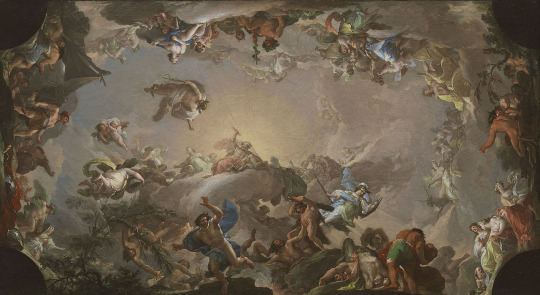

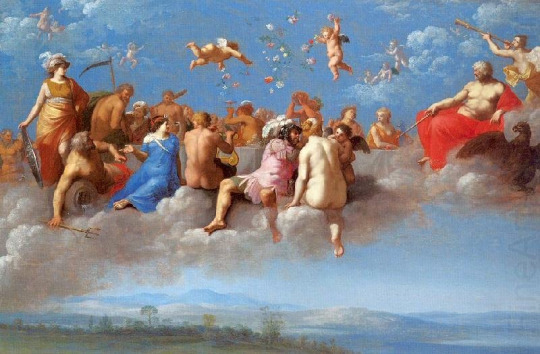


Myths with Zeus
War of the Titans: In this myth, Zeus' father, Cronus, has received the prophecy that one of his children will dethrone him. Out of fear, Cronus swallows all of his children as soon as his wife, Rhea, births them. Rhea manages to sneak out one, Zeus. Eventually, Zeus saves his siblings and starts a revolution against his father, resulting in a 10-year war called the Titanomachy. Zeus and his siblings end up victorious, and Cronus is dethroned and thrown into the pit of Tartarus.
Vows of Chasity: At the request of Hestia and Artemis, Zeus vowed that he would accept the two to remain as virgin Goddesses.
Reconciliation of Zeus and Hera: Hera was mad at Zeus and left Olympus for unknown reasons. Zeus couldn't change her mind, so he went to the cleverest man in the land, Kithaeron. Kithaeron told Zeus to spread the news that he would marry a nymph and craft a wooden statue to play the bride. Zeus did so, and naturally, Hera came back angry. However, instead of a wedding, Zeus surprised Hera with a grand festival (called Daidala), and the two reconciled.
Hera & the Lust of Ixon: Ixon, a mortal King, fell in love with Hera during a visit to Olympus. He tried to rape Hera, to which Hera immediately reported to Zeus. To see if what she said was true, Zeus created a cloud in the sky which looked like Hera. Ixon, who saw the cloud and thought it was Hera, attacked it. Zeus punished Ixon by binding him to an eternally spinning wheel of fire in Tartarus.
Forgiveness of Cronus and the Titans: After many, many generations of Humans, Zeus forgave his father, Cronus, and freed him (and Cronus' brothers) from their prison in Tartarus. Zeus then made Cronus the King of the Elysian Islands (Home of Dead Heroes and the otherwise Blessed).

Orphic Hymn 15: To Zeus
"O Zeus, much-honoured, Zeus supremely great, to thee our holy rites we consecrate, our prayers and expiations, king divine, for all things to produce with ease through mind is thine.
Hence mother earth and mountains swelling high proceed from thee, the deep and all within the sky. Kronion (Cronion) king, descending from above, magnanimous, commanding, sceptred Zeus; all-parent, principle and end of all, whose power almighty shakes this earthly ball; even nature trembles at thy mighty nod, loud-sounding, armed with lightning, thundering god.
Source of abundance, purifying king, O various-formed, from whom all natures spring; propitious hear my prayer, give blameless health, with peace divine, and necessary wealth."
Homeric Hymn 23: To the Son of Cronos
“I will sing of Zeus, chiefest among the gods and greatest, all-seeing, the lord of all, the fulfiller who whispers words of wisdom to Themis as she sits leaning towards him.
Be gracious, all-seeing Son of Cronos, most excellent and great!”

Divider by @/vibeswithrenai
#⚡ — zeus.#🌧️ — marie says:#🌧️ — surprise info dump.#zeus#zeus deity#zeus devotee#helpol#paganblr#hellenic deities#hellenic polytheist#hellenistic polytheism#greek mythology#greek myths#greek gods
246 notes
·
View notes
Text
Simple Art Posters & Canvas Prints

100+ Famous Artists of All Time
#Francois Boucher#Jacques-Louis David#Jean Leon Gerome Ferris#Jean-Honorй Fragonard#John Trumbull#Nicolas Poussin#Rembrandt van Rijn#Sebastiano Ricci#Sir Peter Lely#Theodore Chasseriau#Abraham Bloemaert#Adolphe Yvon#Albert Besnard#Allaert Van Everdingen#Antoine Coypel#Benjamin Robert Haydon#Carle van Loo#Charles Joseph Natoire#Charles Louis Lucien Muller#Ditlev Conrad Blunck
68 notes
·
View notes
Text

Persée délivrant Andromède - Charles-Antoine Coypel
I love how expressive this painting is, Perseus looks determined, the Nereids look pissed, Andromeda looks like she’s completely given up lol but what caught my attention first was Cassiopeia, you can see the fear and grief in her face, she’s a mom who messed up big time but she’s still a mom.
#greek mythology#ancient greek mythology#greek pantheon#nereids#nereid#Perseus#andromeda#Perseus and andromeda#Persomeda#Cassiopeia#Cepheus
9 notes
·
View notes
Text
In place of giving an angry man arms, we should take them away.
—Publilius Syrus
IMAGE: Charles-Antoine Coypel, The Fury of Achilles (1737)

10 notes
·
View notes